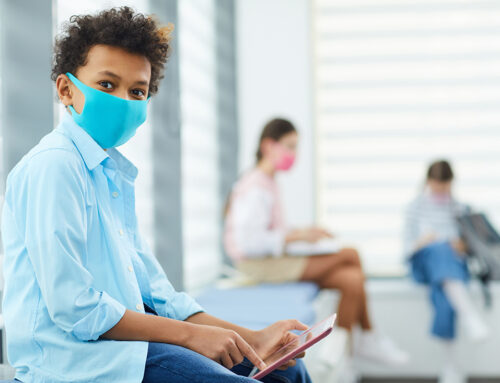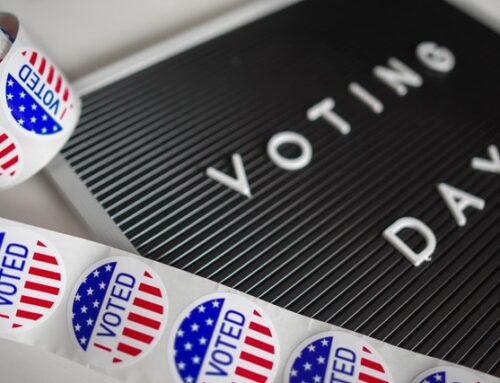“When you have a relatively high density of people exercising and sweating in a contained space, you have conditions where communicable diseases can spread easily.”
Are you getting a little antsy after being in quarantine for so long? Are you ready to get back to the gym to ‘hustle for that muscle’ to work off that ‘quarantine 15’ that you put on during the pandemic?
Or are you still undecided if you want to head back to the gym because you believe it may make you more likely to catch COVID-19?
The question is, is it safe to go back to the gym? Similar to dining out, the answer all depends on where you live, your risk tolerance, as well as the precautions that management has taken at your gym.
As communities have eased the stay-at-home mandates that were put into place to decrease the spread of COVID-19, gyms and fitness centers are starting to reopen their doors – even though the virus continues to infect many more every day.
Gyms Are Germy by Nature
Due to their very nature, gyms tend to be germy in the first place. In a recent study, researchers discovered drug-resistant bacteria, flu virus, and similar pathogens on roughly 25 percent of the surfaces they tested in four different gym facilities.
According to Dr. James Voos, chairman of orthopedic surgery at University Hospitals Cleveland Medical Center and head physician for the Cleveland Browns who was the lead author of the study:
“When you have a relatively high density of people exercising and sweating in a contained space, you have conditions where communicable diseases can spread easily.” 5
Dr Deverick Anderson, who is a professor of medicine and director of the Duke Center for Antimicrobial Stewardship and Infection Prevention at Duke University Medical Center in Durham, cautions that many pieces of gym equipment are difficult to sanitize. This results in a specific consequence where Dr. Anderson says that, “people are going to have to understand and accept that there will be some risk”5 of virus transmission, if and when people go back to the gym.
Before You Go to the Gym – Assess Your Risk…
Before you head to the gym, it is good idea to check out your local, state and community orders with respect to COVID-19 restrictions, according to Grant Baldwin, PhD, co-leader, CDC’s Community Interventions and At Risk Task Force, COVID-19 Response.
Some things you should consider are the following:
- Are those who you will be interacting with following the same protocols to prevent infection as you are, such as handwashing and wearing masks?
- Are you or anyone that shares your residence over the age of 65 or at risk of severe illness? Remember, the risk of acquiring a serious infection from COVID-19 rises with age along with certain preexisting medical conditions such as cancer, COPD, serious heart conditions, type 2 diabetes, to name a few, as well as people who are clinically obese or immunocompromised.
- Another factor to consider is the current level of COVID-19 spread in your community. As Baldwin says, “The lower the level of community transmission, the safer it is for you to go out.” 6
- Are you able to maintain social distancing of at least six feet at your gym in a reasonable manner?
- Are reservations or online check-ins necessary at your gym? Is there a capacity limit? (some state and local orders limit capacity to 50 to 75%)
- What is your gym doing to decrease risk? For example, many gyms are limiting capacity, requiring reservations, taking temperatures, following strict cleaning and disinfecting procedures, requiring masks and social distancing, to name a few.
If you do decide that the risk of going to a gym is one that you are comfortable with taking, we have compiled a list of things you can do to be safer.
9 Things You Can Do to Be Safer While You Are at the Gym…
To be safer and to reduce your risk of catching COVID at the gym, the CDC and the World Health Organization recommend that you take the following 9 precautions:
- Follow social distancing guidelines – There is a high likelihood that your gym will create an environment that enforces social distancing. For example, every other cardio machine may be out of service and there may be barriers up around equipment. It is critical to follow the guidelines the gym has set up and to remain at least six feet away from other gym members.
- Clean, clean, clean! – Make sure to clean equipment both before and after you use it. Some equipment may not be available such as foam rollers, mats, bands, medicine balls, etc.
- Limit physical contact – No matter how excited you are to see your gym buddies after quarantine, avoid giving high-fives or doing elbow bumps with others.
- Prioritize outdoor activities – If you really want to reduce your risk, do virtual classes at home. Another option is to seek facilities that have outdoor space to limit your potential exposure. According to the Mayo Clinic, outdoor exercise is the safer bet. They suggest options such as walking, running, hiking, boating, or golfing, adding that “fitness classes, held outside, that allow distance,” are in their low-risk category.
- Limit group classes indoors – Studies have shown that the virus has a higher likelihood of spreading indoors. So, it is a good idea to limit attendance at indoor group training sessions. However, if you do choose to assume the risk of participating in an indoor class, keep as much space as you can between yourself and others and use a mask if it does not inhibit your activity. It is also a good idea to keep windows open to maximize airflow throughout the space.
- Wear a face covering – Make sure you wear a face covering when entering and leaving the fitness facility, and to wear it during low-exertion activities. Some gyms require a face covering be worn at all times, so check regulations at your specific gym.
- When it comes to the gym, sharing is not caring! So, refrain from sharing items that cannot be cleaned, sanitized, or disinfected such as belts, gloves, resistance bands, straps, etc.
- Do not touch your face, eyes, mouth – This is particularly critical when you are handling frequently touched items. Remember to wash your hands for a least 20 seconds with soap and water after contact with or cleaning of frequently touched surfaces. If soap and water are not readily available, use alcohol-based hand sanitizer that contains at least 60% alcohol.
- Hydrate safely! – It is also a good idea to bring your own water bottle that has your name on it for your use only.
Post-Workout Precautions
While it is always a good idea to stretch and hydrate after a good workout, there are a few other COVID-19-related precautions that you should take to protect yourself and others:
- Make sure to properly and regularly wash your hands after touching gym equipment and as soon as you get home. As we said above, wash with soap and water for at least 20 seconds or use hand sanitizer that contains at least 60% alcohol.
- Toss your gym clothes and towel immediately in the washing machine.
- Disinfect all the items you brought with you to the gym such as foam rollers, resistance bands, straps, and yoga mats.
At the end of the day, when it comes to hitting the gym during the pandemic, the risks will never be zero. So, it is up to all of us to individually decide if the physical and mental health benefits are worth the risk – whatever that may be in our specific situation.
And if we decide to accept some level of risk to realize the benefits we will receive, it is in our best interest to utilize the advice above to mitigate it so that we can get our ‘sweat on’ with confidence…Community Confidence!
References
1 https://www.cdc.gov/coronavirus/2019-ncov/community/organizations/gym-employees.html
2 https://www.cdc.gov/coronavirus/2019-ncov/daily-life-coping/personal-social-activities.html
4 https://www.mdlinx.com/physiciansense/is-it-safe-to-go-back-to-the-gym-heres-what-research-shows/
5 https://www.nytimes.com/2020/05/13/well/move/coronavirus-gym-safety.html
6 https://www.webmd.com/lung/news/20200720/is-it-safe-to-go-to-the-gym





